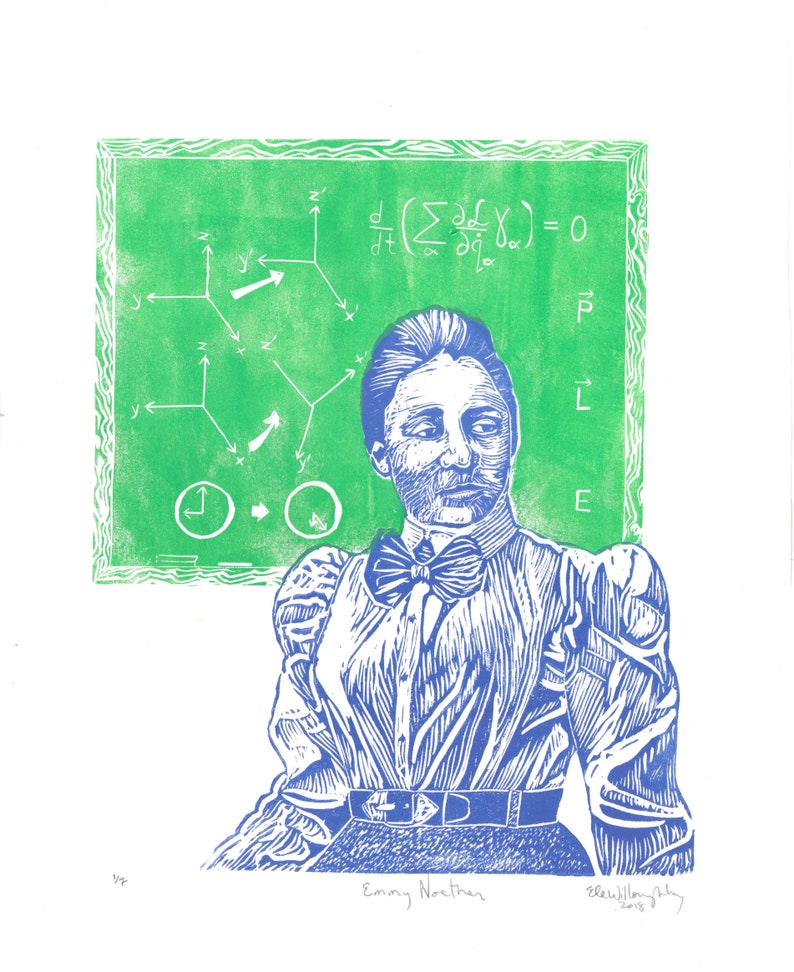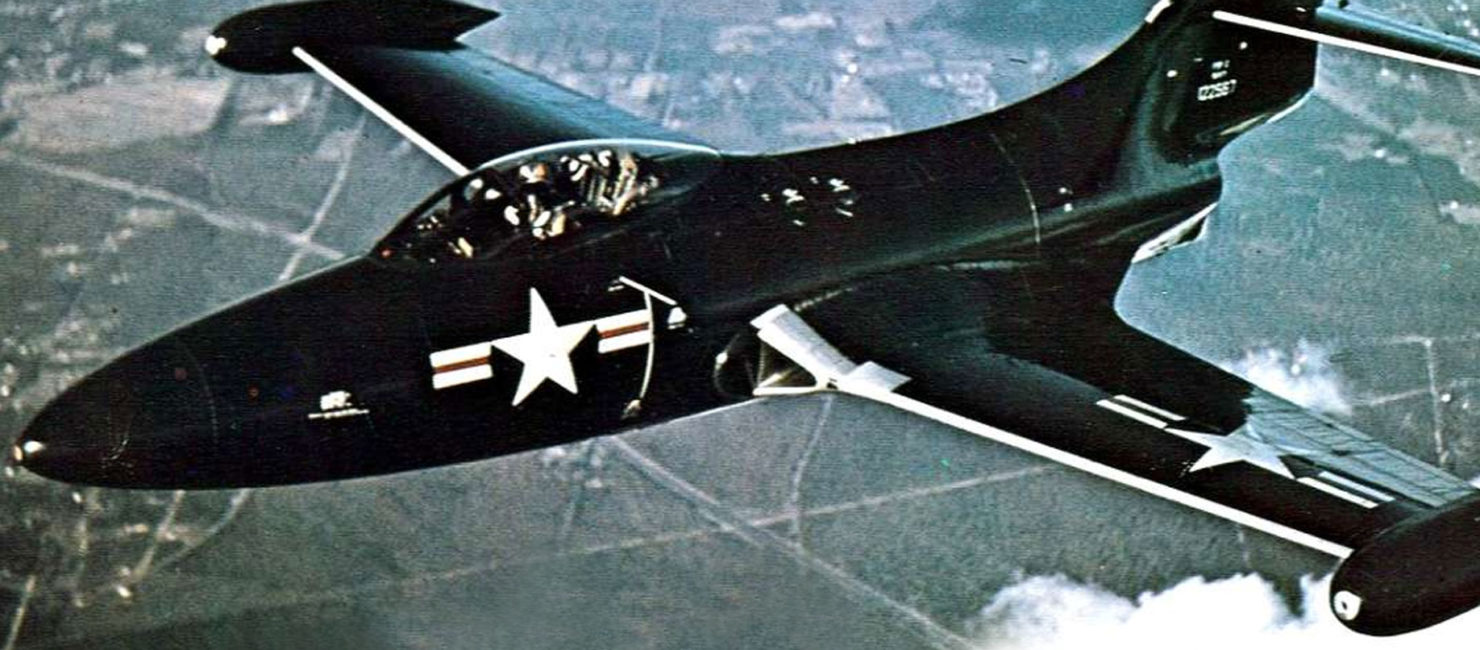The Mongol Invasion of Kyiv Started The Divergence of Russian and Ukrainian Identity
Kyiv was destroyed —Moscow filled the power vacuum.

As Ukraine is being invaded by Russia, the world holds its breath as Russian president Vladimir Putin is labeled a war criminal by U.S. President Joe Biden.
Russia expected a quick victory and takeover of the Ukrainian capital, Kyiv. The city is being bombed by Russian artillery and rockets, killing many civilians and destroying neighborhoods within the city.
However, Ukrainian resistance is resolute. President Volodymyr Zelensky has accused Russia and Putin of “a war of annihilation.”
This is not the first time Kyiv has been invaded. The most prominent example is when the Nazis invaded Ukraine in 1941 and took over the city in three days. According to historian David Stahel, the city was reduced to “rubble and ashes” by air raids.
Russian troops tried to protect the city, but the resistance was futile — 665,000 Russian soldiers were taken as prisoners of war. Jews and other minorities within the city were massacred.
Hitler saw the German takeover of Kyiv as “the biggest battle in the history of the world,” and felt sure it was only a matter of time before the Nazis took over the Soviet Union. However, like most invasions of Russia, the invasion ended terribly for Hitler.
Throughout history, Kyiv has been attacked by global superpowers from the west and the east. Its strategic and cultural significance has always made it a target in the context of overarching geopolitical conflicts.
But no invasion of Kyiv was worst than when the Mongols sacked the city in 1240.
The invasion killed 96% of the population and left the city severely weakened as an ecclesiastical center for Christianity.
It has important implications even today, most importantly leading to the differentiation between Russian and Ukrainian identities which is being battled in today’s wars.
Before the Mongol invasion, Moscow was an obscure city of Kievan Rus which had no cultural or religious significance. After the invasion, Moscow became the most powerful city in the region and home to a Tsarist Empire, while Kyiv languished as a political possession of different empires.
This is the story of how the Mongol invasion of Kyiv started the divergence between Russian and Ukrainian identity and language.
The history of Kyiv before the Mongol invasions

According to Slavic legend, the name “Kyiv” comes from a story of three brothers, Kyi, Shchek and Khoryv, who established the city with their sister Lybid. The city was named after Kyi, a Slavic tribal leader, and Kyiv is translated as “Kyi’s place.”
Historian Michael Hamm says prior to Kyivan Rus, not much is known about Kyiv and the Slavic people who occupied the settlement.
Hamm notes Kyiv was conquered in 882 by Oleg of Novgorod, who was part of a biking tribe known as the Varangians. Oleg was a relative of Rurik, the founder of Kievan Rus’, whose descendants would go on to rule the city for almost four centuries.
The Varangians became more Slavic as time went on. Eventually, in the 10th century, most of Kievan Rus’ converted to Orthodox Christianity and maintained strong relationships with Rome.
In particular, Kyiv prospered as the capital of Kyivan Rus, from the 9th century to the 12th century. Many famous monasteries and cathedrals were built during this time, including the Cathedral of St. Sophia. During this period of prosperity, Kyiv had to constantly fight off nomadic steppe people to the south but was able to successfully fend off these attacks.
Jaroslaw Pelenski of the Harvard Ukrainian Research Institute points to the 1169 sack of Kyiv as a turning point for the city, and Kyivan Rus as a whole. Kyiv had been undergoing succession crises between competing princes of the Varangian dynasty, in a messy process that strongly weakened the city.
Prince Andrew Bogolyubsky, later known as King Andrew I, sacked the city for three days, plundered artwork in the city, destroyed much of the city, then left, seeing no benefit in settling down in Kyiv. Instead, Bogolyubsky set up a new capital at Vladimir.
According to historian Karl Baedeker, a couple of years later, in 1171, prince Svyetoslav Vsevolodovitch sacked the city. In 1203, prince Rurik Rostislavich also sacked the city.
Derek Davison, the author of history newsletter Foreign Exchanges, says the 1240 Mongol sack of Kyiv was the end of Kyivan Rus, but the reality was the city had been weakening long before then. The balance of power was shifting from Kyiv during the succession crisis between princes, and decentralization of power from Kyiv towards cities like Vladimir.
Also, once the Fourth Crusade sacked Constantinople, Kyiv lost a crucial trading partner and put the city in a steep decline. Another crusade invaded the “pagans” of the Baltic region, which was on the northwest border of Kievan Rus’. Davison emphasizes all these dynamics and events led to Kyiv’s collapse at the hands of the Mongols as much as the Mongol invasion itself.
But few in the city could have been prepared for the sheer brutality of the Mongol invasion.
The Mongol invasion

Since Kyiv is pretty far west of Mongolia, it was not the first nor the last city the Mongols invaded. Genghis Khan died in 1227, but by that time, their conquests were well known.
Around that time, the Mongol Empire had conquered the Khwarezmian Empire in the Middle East, the Xi Xia Empire in northwest China, much of Russia, and China itself. The Mongols ruled everything from the China Sea in the east to the Caspian Sea in the west.
One of Genghis Khan’s sons, Ogedei Khan, took over the empire. But two generals, Jebe and Subutai, were involved in much of the Mongol invasions of Russia. They had raided as far west as Moscow and Novgorod. as well as Crimea. Their army of 20,000 people defeated armies much greater, including in the Battle of Kalka River in 1223.
But Subutai and Jebe left because they did not have resources for conquest. Until 1235, the Mongols did not return to Eastern Europe.
But this time, they did return for conquest. They learned the siege tactics of Chinese and Islamic cities and became skilled at siege and urban warfare.
In The Secret History of the Mongols, the legendary literary history of the Mongol Empire, the author wrote Subutai had “gone to war against the city of Kyiv” but failed to take it because he “had run into great resistance there.” This initial advance had eventually stopped at Kyiv.
As a result, Subutai needed reinforcements: Ogedei sent his nephew, Batu Khan and his army.
The second invasion of Eastern Europe in the late 1230s made short work of most Russian cities. This time, no city in Eastern Europe stood a chance at the already formidable Mongol foes, who were now well-versed in siege warfare.
The massacre of Kyiv
The Mongols had already destroyed Ryazan in northeast Kyivan Rus, then Vladimir and Kozelsk, two big cities to the west of Ryazan. The prize of Kyiv was seen as the ultimate prize for the Mongols, and Möngke, a general in Batu Khan’s army, did not want to raze Kyiv to the ground because it was so beautiful.
Möngke apparently sent ambassadors to negotiate the surrender of Kyiv. However, a warlord named Dmytro, in charge of defending Kyiv, killed the envoys. This was an unforgivable sin — in one notable case when the Shah of a city called Otrar killed three Mongolian diplomats, Genghis Khan invaded the Shah’s empires and massacred entire cities.
Diplomats had a sacred status. To the Mongols, anyone who killed a diplomat needed to be sent a message.
Kyiv was sent this message. The Mongols sacked the city worse than any prince had beforehand.
According to Alexander Maiorov at The Slavonic and East European Review, the Mongols started bombarding the city on November 28, 1240. They set up catapults near the city gates and besieged the city for several days. On December 6, the Mongols breached the walls of the city.
Of the 50,000 population of Kyiv, only about 2,000 people survived. Almost the entire city was burned down and only six buildings were left standing. Ironically, despite Dmytro killing the Mongol ambassadors, Batu Khan’s forces chose to spare him due to how valiantly he fought.
The Mongols kept invading Eastern Europe, pushing into Poland and Hungary. They also invaded Austria and Bulgaria.
However, in 1241, the invasion stopped suddenly. Ogedei Khan died, leading to a succession crisis for the Mongols. Batu Khan’s forces promptly returned to Mongolia, sparing Western Europe from a Mongol invasion. The Golden Horde would rule much of the territory for hundreds of years, but Batu and Guyuk, a son of Ogedei Khan, engaged in a succession crisis that would greatly weaken the Mongol Empire.
Takeaways
Conclusions of “Kyiv has been through worse” or something like “at least Putin isn’t destroying the city like the Mongols” are tone-deaf in the context of current events.
Today, Kyiv and Ukraine are much better equipped for a foreign invasion from a superpower.
But we can date back to the Mongolian invasion of Kyiv to the shift of power from Kyiv to Moscow in the region. Prior to the Mongolian invasion, the East Slavic people were all part of Kyivan Rus. After, however, three separate nations evolved: Belarus, Ukraine, and Russia.
Before the Mongols invaded Kievan Rus, Moscow was an obscure, new city. Afterward, however, Moscow led the forefront of resistance against the Mongols. Moscow began to grow more powerful than other cities in the region, eventually defeating the Mongols in crucial battles. Since Kyiv was an important religious center, after its destruction, the Russian Orthodox Church moved its headquarters to Vladimir. In 1327, it moved to Moscow, boosting its prominence.
For a long time, Moscow allied with the Mongols and helped put down invasions of neighboring cities. One Russian prince, Ivan I, was named Grand Prince. Moscow eventually defeated the Mongols in the Battle of Kulikovo in 1380, gaining its independence.
But the city became the capital of Russia and the capital of the later Tsardom the country was famous for.
Russia and Ukraine may have once been part of the same nation, but the countries grew apart after the Mongol invasion. Kyiv was decimated, and Moscow rose to power, which has contributed to the power imbalance between Ukraine and Russia even today.
Moscow became powerful due to allegiances with the Mongols and the collapse of neighboring powerful cities, like Kyiv. The Russian Orthodox Church moved to Moscow due to the Mongol invasion, and we can argue this chain of events was the origin of present-day tensions between Russia and Ukraine.
Kyiv took a very long time to recover — after all, losing 96% of your population and having your city razed to the ground does that to you. Kyiv would be subject to being conquered by several bigger powers over the new several centuries.
First, the Grand Duchy of Lithuania conquered the city in 1362, followed by Crimea in the 15th century and Poland in the 16th century. Crimean Tatars sacked the city twice in the 15th century. According to Hamm, one Venetian traveler said Kyiv was “plain and poor” in 1474, with a population much lower than Lviv.
Russia and Ukraine diverged following the Mongol invasion, but Russia takes claim over Ukraine now as it fears the possibility of Ukraine joining NATO.
But despite Russia and Ukraine attributing their origins to Kyivan Rus, Russia laying claim to Ukraine is incredibly dubious since the two countries diverged so much. Ukraine, Russia, and Belarus developed different languages and national identities.
According to one CBS correspondent, it would be like Vikings claiming ownership of France and England because of the role they played in founding those countries. Russia and Ukraine were tied together under Tsarist rule from the 17th century to the 19th century. But Ukrainian nationalism was too strong for the Tsars, leading to the banning of the Ukrainian language in the 19th century.
Western Ukraine especially never came under Russian Tsarist rule and was ruled by Poland or Austria, which respected the Ukrainian language and identity. Cities like Lviv today have a strong Ukrainian identity, and following the Russian Revolution of 1917, Ukraine, like Belarus, Finland, and Poland, tried to break free from Russia.
The fact remains Ukraine has its own unique language and national identity arising from the invasion of the Mongols. Ukraine’s capital, Kyiv, has a much longer history than Russia’s capital, Moscow.
To acknowledge Ukraine’s own identity and language separate from Russia’s is a political act.
But it is a correct classification to make because it’s true.
Our world is filled with captivating things and views.
Here is a collection of 15 photographs of rarely seen things – from unusual-looking creatures and objects to some of nature's weird wonders.1. A transparent fish also called the Sea Salp. Sea Salps are one of the most remarkable creatures of Earth. This barrel-shaped fish has a gelatinous body and feeds on phytoplankton (marine algae). Sea Salps are not just unique because of their transparent bodies. They are rare creatures that exist both as individuals and part of a larger organism.2. These aren't broken shards of glass. This is a frozen Lake Michigan.
Sea Salps are one of the most remarkable creatures of Earth. This barrel-shaped fish has a gelatinous body and feeds on phytoplankton (marine algae). Sea Salps are not just unique because of their transparent bodies. They are rare creatures that exist both as individuals and part of a larger organism.2. These aren't broken shards of glass. This is a frozen Lake Michigan. Ice formation on Lake Michigan usually begins in January and reaches its peak in late February or early March. During the peak winter season, temperatures sometimes reach -30°C (-23°F), resulting in ice shelves forming on the lake.3. Baikal Dzen formation on Lake Baikal.
Ice formation on Lake Michigan usually begins in January and reaches its peak in late February or early March. During the peak winter season, temperatures sometimes reach -30°C (-23°F), resulting in ice shelves forming on the lake.3. Baikal Dzen formation on Lake Baikal. Lake Baikal is located in the Russian region of Siberia. This freshwater lake is witness to the most unique phenomena known as the Baikal Zen. It happens when stones brought by the wind to the ice of the lake are warmed and the day sun melts the ice under them. This causes the rock to remain balanced on a pedestal of thin ice.4. A Bashkir Curly Horse.
Lake Baikal is located in the Russian region of Siberia. This freshwater lake is witness to the most unique phenomena known as the Baikal Zen. It happens when stones brought by the wind to the ice of the lake are warmed and the day sun melts the ice under them. This causes the rock to remain balanced on a pedestal of thin ice.4. A Bashkir Curly Horse. The origin of this fascinating horse is a mystery. The Bashkir Curly is known to be a calm breed of horse with a mild temperament. Its other characteristics include a thick bone, strong, round hooves, intelligence, and exceptional memory. What makes it stand out from other breeds of horses, however, is its distinctive curly coat.5. The extremely rare Albino Buck, also called the 'White Deer'.
The origin of this fascinating horse is a mystery. The Bashkir Curly is known to be a calm breed of horse with a mild temperament. Its other characteristics include a thick bone, strong, round hooves, intelligence, and exceptional memory. What makes it stand out from other breeds of horses, however, is its distinctive curly coat.5. The extremely rare Albino Buck, also called the 'White Deer'.Sightings of albino deer are very uncommon and they are considered as mystical ghosts of the woods because of their fairytale-like appearance. The chances of an albino deer being born are only 1 in 20,000, as the recessive gene that causes albinism in whitetail deer is extremely rare. The stories of these unusual animals have been a part of several ancient Native American legends and folklore.
6. No, these aren't street craters. They are dinosaur footprints in France. These giant footprints belong to a large sauropod dinosaur and were discovered in Plagne, France. These extraordinary traces of the now-extinct dinosaur were found by geologists and biologists from the Société Des Naturalistes d'Oyonnax (SDNO). The footprints measure almost 155 meters in length and are more than 145 million years old.7. Ever seen a music typewriter?
These giant footprints belong to a large sauropod dinosaur and were discovered in Plagne, France. These extraordinary traces of the now-extinct dinosaur were found by geologists and biologists from the Société Des Naturalistes d'Oyonnax (SDNO). The footprints measure almost 155 meters in length and are more than 145 million years old.7. Ever seen a music typewriter? Better known as The Keaton Music Typewriter, this instrument was first patented in 1936 by Robert H. Keaton from San Francisco, California. The typewriter was promoted in the 1950s and sold for around $225. The machine made it easier to produce music copies in large quantities for publishers, educators, and other musicians. The distinct circular look of the typewriter made it very popular in its time.8. A 500 kg dinosaur bone found in France.
Better known as The Keaton Music Typewriter, this instrument was first patented in 1936 by Robert H. Keaton from San Francisco, California. The typewriter was promoted in the 1950s and sold for around $225. The machine made it easier to produce music copies in large quantities for publishers, educators, and other musicians. The distinct circular look of the typewriter made it very popular in its time.8. A 500 kg dinosaur bone found in France. A giant 500 kilogram (1102.31 pounds) dinosaur thigh bone was uncovered by scientists in south-western France at an excavation site in 2019. The femur is two meters (6.6 ft) long and is believed to have belonged to a sauropod. This plant-eating dinosaur was found in the late Jurassic era and was one of the largest land animals that ever existed.9. That's not a ball. It is a single living cell.
A giant 500 kilogram (1102.31 pounds) dinosaur thigh bone was uncovered by scientists in south-western France at an excavation site in 2019. The femur is two meters (6.6 ft) long and is believed to have belonged to a sauropod. This plant-eating dinosaur was found in the late Jurassic era and was one of the largest land animals that ever existed.9. That's not a ball. It is a single living cell. While this may be hard to believe, the picture above is of a living cell. Known as Valonia ventricosa, or "bubble algae", this species of algae is one of the largest single-celled organisms in the world. They are found in oceans, and their color mostly varies from grass green to dark green.10. This is how an ant's face looks like under an electron microscope.
While this may be hard to believe, the picture above is of a living cell. Known as Valonia ventricosa, or "bubble algae", this species of algae is one of the largest single-celled organisms in the world. They are found in oceans, and their color mostly varies from grass green to dark green.10. This is how an ant's face looks like under an electron microscope. At first glance, this picture appears rather eerie as the antennae holes of the ant look more like eyes. The image was captured using Electron microscopy (EM), which is a technique for getting high-resolution images of much higher magnification than a normal light microscope. It is used in biomedical research to examine the in-depth structure of biological materials along with various other objects.11. The very rare Blue Java Banana, which is said to taste like ice-cream.
At first glance, this picture appears rather eerie as the antennae holes of the ant look more like eyes. The image was captured using Electron microscopy (EM), which is a technique for getting high-resolution images of much higher magnification than a normal light microscope. It is used in biomedical research to examine the in-depth structure of biological materials along with various other objects.11. The very rare Blue Java Banana, which is said to taste like ice-cream. While facts about this amazing fruit may appear to be a hoax, they are indeed completely true. Blue Java bananas have a taste and creamy texture that is similar to vanilla ice cream. Apart from their unique taste, these bananas stand out because of the bright blue color of their peel. These delicious fruits are widely grown in Southeast Asia and relished as a dessert.12. This is a leaf, right? Wrong! It is actually a Sea Slug.
While facts about this amazing fruit may appear to be a hoax, they are indeed completely true. Blue Java bananas have a taste and creamy texture that is similar to vanilla ice cream. Apart from their unique taste, these bananas stand out because of the bright blue color of their peel. These delicious fruits are widely grown in Southeast Asia and relished as a dessert.12. This is a leaf, right? Wrong! It is actually a Sea Slug. This is a solar-powered sea slug, or Elysia chlorotica, and looks like a leaf. It can grow to more than 2 inches long and possess an exceptional ability to steal algal plastids (also known as chloroplast robbery), stop feeding thereafter and survive off the photosynthesis from the algae for the next six to eight months. They are found in shallow waters along the east coast of North America.13.Here's a look at grains of sand when magnified 100 to 300 times.
This is a solar-powered sea slug, or Elysia chlorotica, and looks like a leaf. It can grow to more than 2 inches long and possess an exceptional ability to steal algal plastids (also known as chloroplast robbery), stop feeding thereafter and survive off the photosynthesis from the algae for the next six to eight months. They are found in shallow waters along the east coast of North America.13.Here's a look at grains of sand when magnified 100 to 300 times. Sand appears the same to all of us. However, Gary Greenberg, a scientist from Hawaii, has shown through these images that when magnified by a hundred-fold or more, each grain of sand exhibits its distinct characteristic. Using high-definition 3D lenses that he invented, Dr. Greenberg took these pictures "to show people how ordinary things are truly extraordinary when you look from a new point of view". Bear in mind that sand compositions vary depending on where they are from.14. A "Split Lobster", which is half male and half female.
Sand appears the same to all of us. However, Gary Greenberg, a scientist from Hawaii, has shown through these images that when magnified by a hundred-fold or more, each grain of sand exhibits its distinct characteristic. Using high-definition 3D lenses that he invented, Dr. Greenberg took these pictures "to show people how ordinary things are truly extraordinary when you look from a new point of view". Bear in mind that sand compositions vary depending on where they are from.14. A "Split Lobster", which is half male and half female. No, this is not a photoshopped image. This is a split-colored lobster that has a condition known as gynandromorphy. This means it is half male, half female. In this particular specimen's case, the blue side is the female one and the brown side is the male one. Amazingly, this rare genetic variation happens in only about 1 out of every 50 million lobsters.15. This is not a painting, but a view of the sun via a UV Lens by NASA.
No, this is not a photoshopped image. This is a split-colored lobster that has a condition known as gynandromorphy. This means it is half male, half female. In this particular specimen's case, the blue side is the female one and the brown side is the male one. Amazingly, this rare genetic variation happens in only about 1 out of every 50 million lobsters.15. This is not a painting, but a view of the sun via a UV Lens by NASA. At first glance, the picture above appears to be a painting. However, this is actually a series of unusual eruptions from the outermost atmosphere of the Sun that was captured by a team of astronomers using NASA's three Sun-gazing spacecraft in 2013. According to the team, a series of fast puffs, that took place over a period of three days, forced the slow ejection of an enormous burst of plasma from the sun's atmosphere
At first glance, the picture above appears to be a painting. However, this is actually a series of unusual eruptions from the outermost atmosphere of the Sun that was captured by a team of astronomers using NASA's three Sun-gazing spacecraft in 2013. According to the team, a series of fast puffs, that took place over a period of three days, forced the slow ejection of an enormous burst of plasma from the sun's atmosphere
|
Why American Leaders Relish Hot-Dog Diplomacy
For 80 years, wieners have been an essential component of foreign policy.
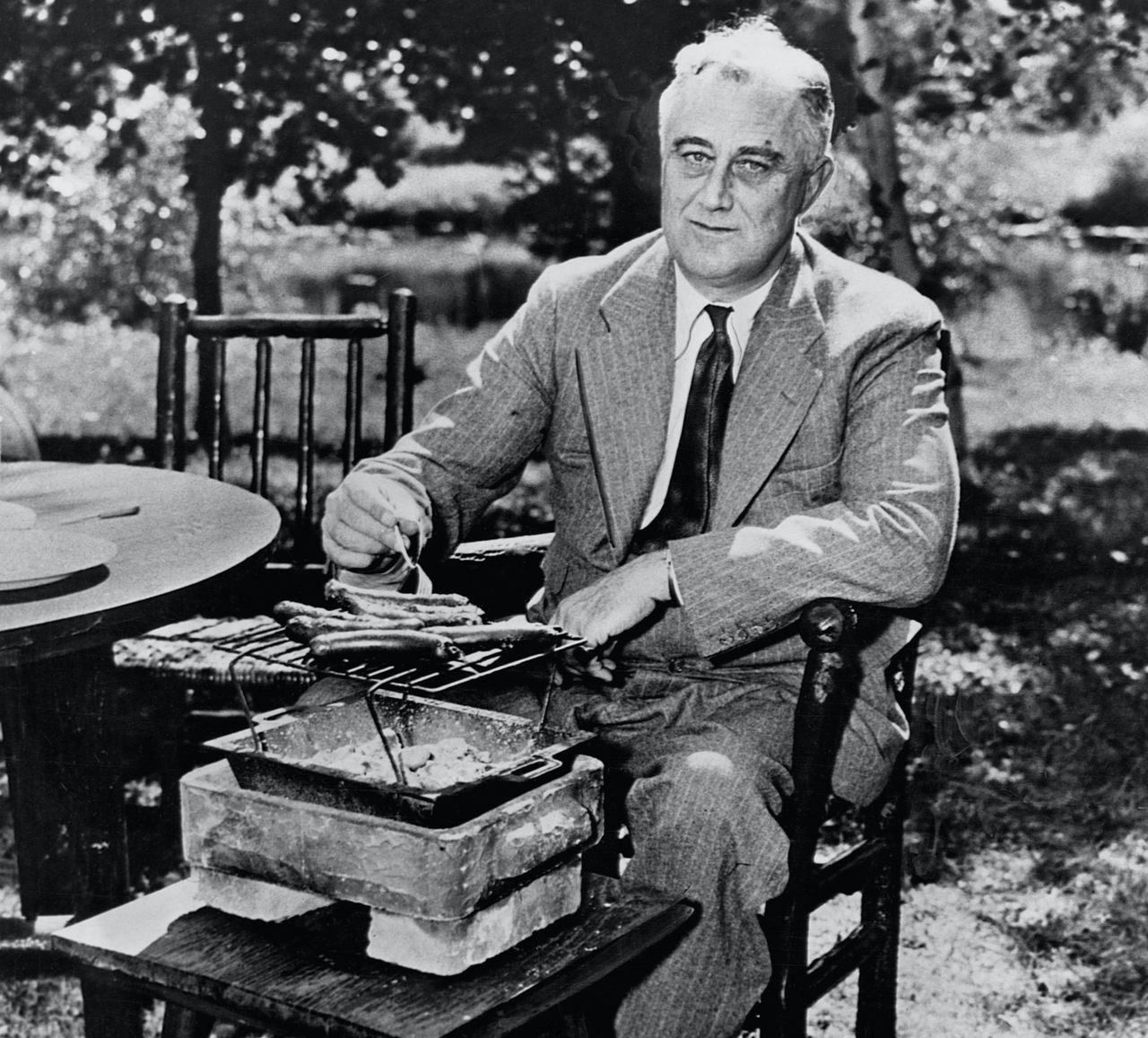
WHEN KING GEORGE VI OF Great Britain visited American President Franklin Delano Roosevelt in 1939, war was looming in Europe. But for one brief moment, all that mattered was hot dogs.
The king and his wife, Queen Elizabeth (mother of the current queen), had traveled across the Atlantic for an official state visit, with an itinerary that included a trip to the Roosevelt family estate in Hyde Park, New York, where First Lady Eleanor Roosevelt had planned a picnic lunch. It was an intentionally informal affair that swapped the White House dining room and champagne toasts for a countryside porch and casual conversation—including instructions on how, exactly, to eat the meal’s centerpiece.
“The king looked at the hot dog and said, ‘What should I do?’” the Roosevelts’ son James recounted years later. “My father said, ‘Put it in your mouth and keep chewing until you finish it.’”
This wasn’t the first time the Roosevelts had hosted such a meal for world leaders—they had served hot dogs when Crown Princess Louise of Sweden visited Hyde Park in 1938. But the picnic with British royalty turned into a media frenzy. Newspapers on both sides of the Atlantic reported every detail: the paper plates, the royals ditching their usual protocol and shaking hands with guests, Eleanor Roosevelt’s casual attire of “an old rose and white cotton sport suit,” the fact that King George asked for seconds and washed it all down with beer.
The menu also included Boston brown bread and strawberry shortcake, but it was the hot dogs that made headlines. In the years that followed, they became the central feature of the collective memory of the event, mentioned in obituaries when King George VI died in 1952 and in news coverage when the Hyde Park residence went on the market in 1968.
But the event had a larger legacy. It kickstarted an enduring tactic of American international relations: hot-dog diplomacy.
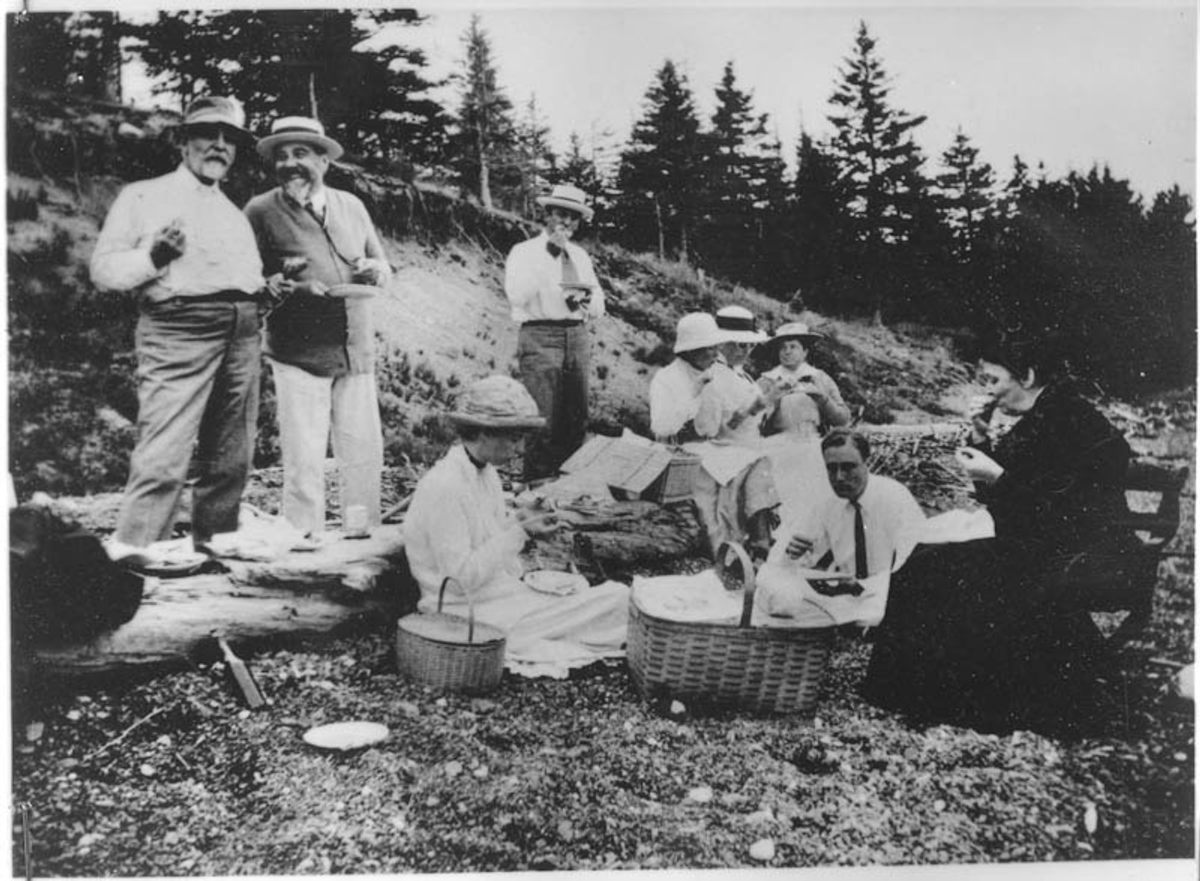 Franklin D. Roosevelt and Eleanor Roosevelt with Sara Delano Roosevelt at a picnic in New Brunswick, Canada, 1906. FRANKLIN D. ROOSEVELT PRESIDENTIAL LIBRARY & MUSEUM
Franklin D. Roosevelt and Eleanor Roosevelt with Sara Delano Roosevelt at a picnic in New Brunswick, Canada, 1906. FRANKLIN D. ROOSEVELT PRESIDENTIAL LIBRARY & MUSEUMAS THE ROOSEVELTS SEEMINGLY UNDERSTOOD, the central and overlapping selling points of a hot dog—beyond being tasty—are convenience, informality, and adaptability. They’re simple, handheld foods that you can eat by themselves or gussy up in an infinite number of ways. The National Hot Dog and Sausage Council counts 18 regional variations, though surely there are more, each representing distinct cultural identities and traditions. But at their core, each hot dog is still merely and magnificently the same thing, and maybe the closest the United States has to a national dish.
That broader symbolism has grown over the years, but it was already a work in progress when the Roosevelts held their picnic in 1939.
“So often when we try to define a national food culture in the U.S., it’s really difficult to do so,” says Smithsonian food historian Dr. Ashley Rose Young. “In the modern context, people often cite things like McDonald’s or international fast food cultures. But if you go back to the 1800s or even through 1950, when you would ask someone to define American culture, they would go through regional cultures, and the hot dog was a regional food that was gaining popularity outside of the Northeast.”
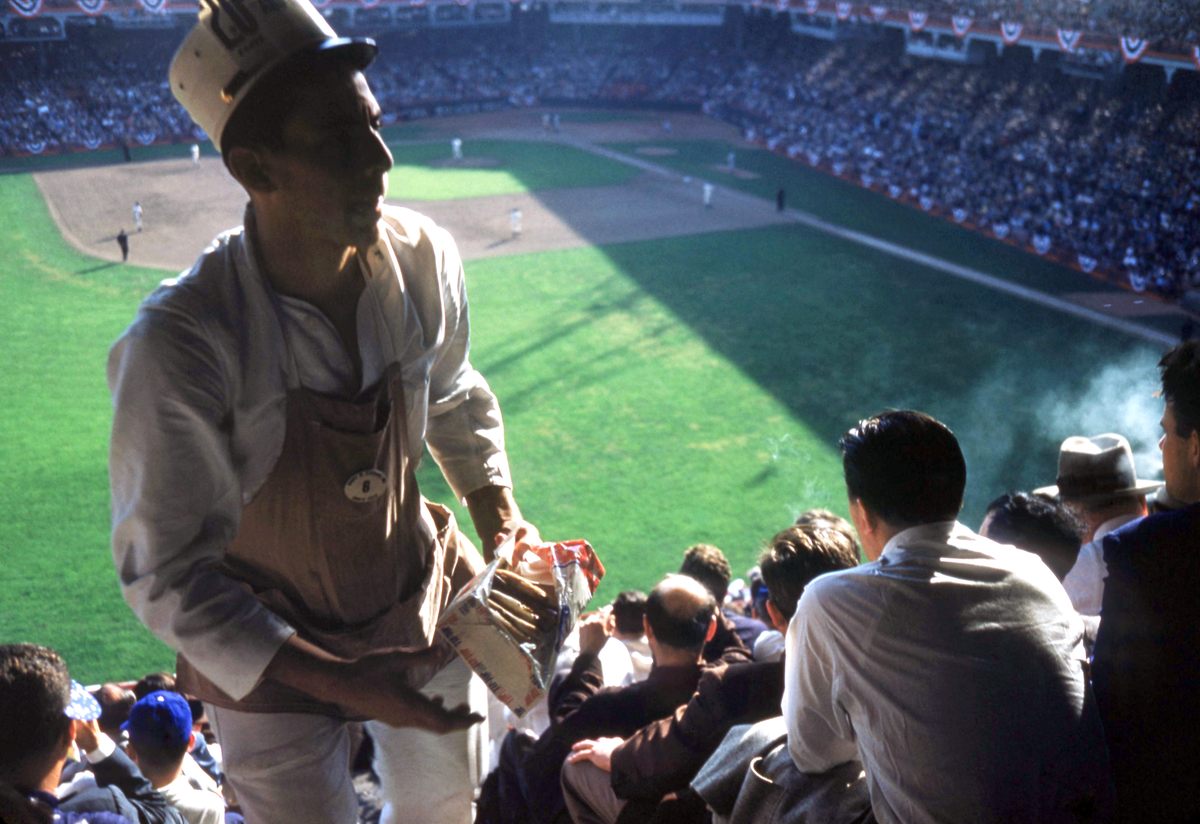 A vendor sells Frankfurter hotdogs for 20 cents during the 1953 World Series in Brooklyn, New York. HY PESKIN/GETTY IMAGES
A vendor sells Frankfurter hotdogs for 20 cents during the 1953 World Series in Brooklyn, New York. HY PESKIN/GETTY IMAGESThe key to the hot dog’s spread was baseball. In the early 1900s, as the sport gained a reputation as the national pastime, media outlets extolled it as “a place where immigrants can learn America,” embodying ideals about the rule of law and meritocracy, says Dr. Seth Tannenbaum, assistant professor of sport studies at Manhattanville College. After stadium vendors in the Northeast started selling hot dogs, sometime around 1901, the food gained a similar reputation as what Tannenbaum calls “a supposedly democratic food within the supposedly democratic atmosphere of the baseball stadium.”
One vendor at the Polo Grounds in New York, Harry Stevens, is often credited with being the first to sell hot dogs at a ballpark. Tannenbaum’s research has shown that this is incorrect—other people were selling them before this—but Stevens did help solidify the conceptual relationship between food and pastime, thanks to an interview with The New York Times in 1924. “If I were poetic, I would say that one touch of the frankfurter made the whole world kin,” Stevens said. “At the counters in the rear of the Polo Grounds, you would find a prominent banker eating a frankfurter and drinking a glass of beer, and beside him would be a truck driver doing precisely the same thing.”
The same ideals underpinned the picnic at Hyde Park. It was a chance for both American and British leaders to relax but also, critically, to show off their common touch. It let the king and queen participate in a “more egalitarian kind of culture than they had in Europe, because of how the hierarchy worked and how royalty was treated,” Young says.
IMMEDIATELY AFTER THE ROOSEVELTS’ SAUSAGE feast, hot dogs became a fad food in the United States: retailers sold an additional 1 million pounds in the following months, and “society belles” ate them at parties in London.
Their elevation to a staple of diplomacy was equally swift. Fifteen days after hosting King George VI and Queen Elizabeth, the Roosevelts had the crown prince and crown princess of Norway over for the same meal. Two days later, the American embassy in France “served the delicacy without the bun” to diplomats and “French society in Paris.” And in 1943, during World War II, the U.S. embassy in Moscow held a Fourth of July party featuring “hot dogs with buns and mustard; punch with vodka.”
“The king looked at the hot dog and said, ‘What should I do?’”
While the first decade or so of hot-dog diplomacy could be chalked up to the burst of initial media attention, its endurance signaled a more intentional effort by American diplomats and their counterparts. In 1954, the American government airlifted 100 hot dogs and buns (and “a supply of mustard”) to the newly crowned Queen Elizabeth. Two years later, the Queen herself got in on the act, serving hot dogs at Buckingham Palace for visiting members of the American Bar Association, who reportedly enjoyed the homestyle meal and took advantage of the relaxed protocols to smoke cigarettes and cigars “all over the 42 acres of the lawn—something that guests to the Queen’s garden parties are not supposed to do.”
Hot dogs, and the sense of aw-shucks egalitarian fun they can embody, offered a low-key display of American ideals, and by inviting other leaders to join the feast and play a part in the production, American officials offered them a chance to portray themselves as regular folks. This fit conveniently within the United States’ postwar “soft power” kick, which promoted national identity and might through culture and non-military means.
The most famous soft-power effort of the era was the Marshall Plan. There was also, among others, the Jazz Diplomacy program, which sent musicians including Dizzy Gillespie and Louis Armstrong abroad as unofficial emissaries, promoting American culture and, the government hoped, subtly endorsing American policies and power. This cultural battle was a hallmark of the Cold War, with the Soviet Union funding competing displays and, most bizarrely, the CIA funding modern art and buying paintings detested by taxpayers.
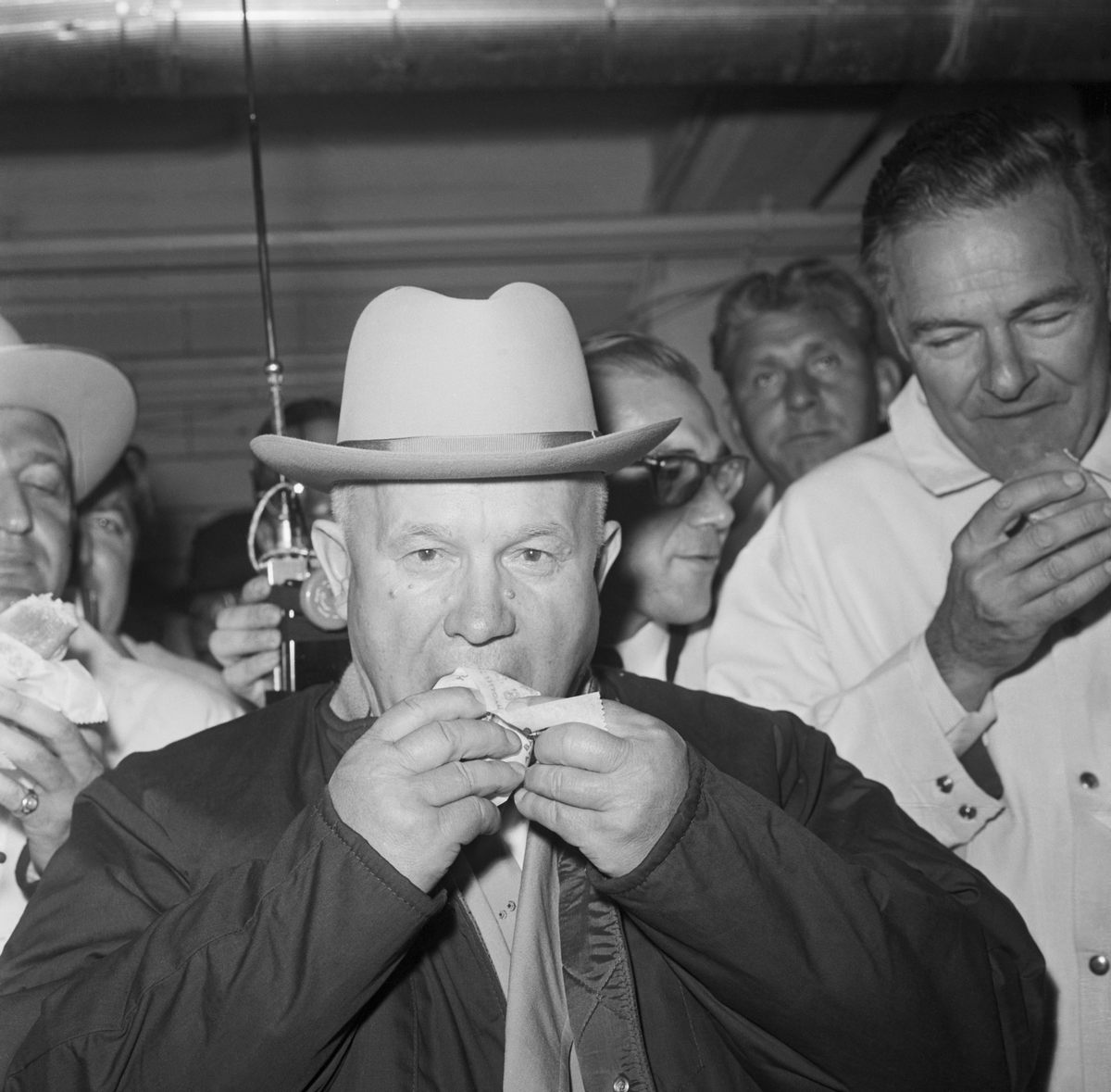 Soviet Premier Nikita Khrushchev tastes his first American hot dog in Iowa in 1959. BETTMANN / GETTY IMAGES
Soviet Premier Nikita Khrushchev tastes his first American hot dog in Iowa in 1959. BETTMANN / GETTY IMAGESIt’s not surprising that food was part of this broader campaign—the art of “gastrodiplomacy” dates back to ancient Rome, and it’s taken off in the last century, with other prominent examples including Thailand’s promotion of pad thai, Chairman Mao’s mangoes, and Peru’s recent push to be the next big culinary trend. In 2012, the United States launched the Diplomatic Culinary Partnership, formally establishing the country’s gastrodiplomacy decades after the Roosevelts started the unofficial version with their picnic at Hyde Park.
In every case, media coverage of hot-dog diplomacy is almost as important as that meal itself. There always seem to be cameras present, or at least reporters, all of them eager to feast on the spectacle of powerful people eating street food. And while American leaders popularized hot-dog diplomacy, the master of it may have been Soviet Premier Nikita Khrushchev. During a trip to the Des Moines Packing Co. in Iowa in 1959, while eating hot dogs with Henry Cabot Lodge, the U.S. ambassador to the United Nations, Khrushchev asked, “Capitalist, have you finished your sausage?” “Yes, we capitalists get hungry, too, you know,” Lodge replied. The cameras clicked, the two men had a laugh, and the hot dogs—and the leaders’ camaraderie while eating them—were headlines the next day, a diplomatic win for all involved.
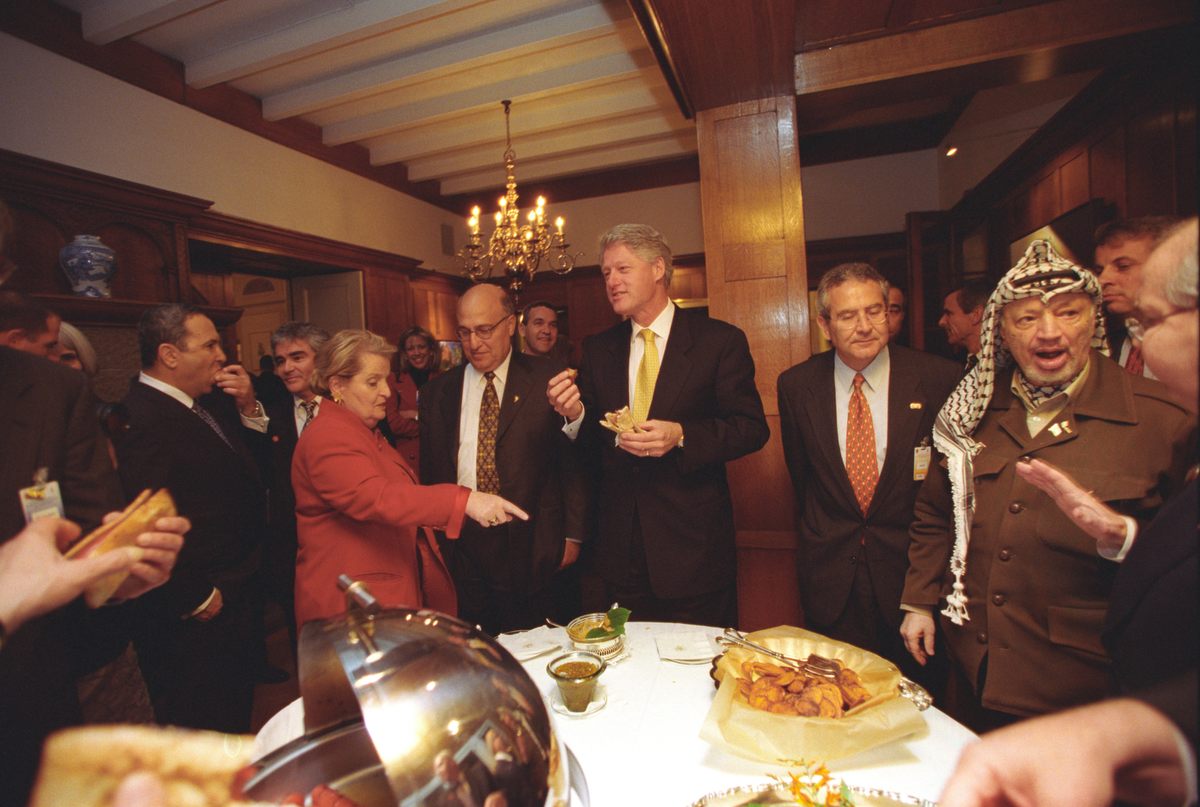 Israeli Prime Minister Ehud Barak, Secretary of State Madeleine Albright, President Bill Clinton, and Yasser Arafat of the Palestinian Authority engaged in hot-dog diplomacy. SHARON FARMER / WILLIAM J. CLINTON PRESIDENTIAL LIBRARY
Israeli Prime Minister Ehud Barak, Secretary of State Madeleine Albright, President Bill Clinton, and Yasser Arafat of the Palestinian Authority engaged in hot-dog diplomacy. SHARON FARMER / WILLIAM J. CLINTON PRESIDENTIAL LIBRARYThe process of making a hot dog is, famously, not one that most people want to know about in detail, and the same could be said of the national mythology that hot dogs ostensibly embody: look beyond the surface and the reality can be off-putting. The precise symbolism of hot-dog diplomacy—we’re all friends and there’s no formality or discord here—doesn’t always stand up to scrutiny, but those egalitarian ideals remain a strong marketing tool.
In recent years, French President Nicolas Sarkozy got a double serving of hot-dog diplomacy, first at the Kennebunkport vacation home of then-President George W. Bush, in 2007, and then, in 2010, a meal of half-smokes at Ben’s Chili Bowl in Washington, DC, with President Obama. Three months later, during a trip to New York City, British Prime Minister David Cameron lunched at a Central Park hot dog cart with Mayor Michael Bloomberg. The meals were covered with the usual, mostly charmed amusement in the press (although Cameron caused a minor outrage in Britain because he didn’t use any mustard).
In 1999, President Bill Clinton met with Israeli Prime Minister Ehud Barak and Palestinian Authority President Yasser Arafat in Norway, with a goal of negotiating peace in the Middle East. The three men ended the session by sharing a meal of hot dogs—a symbol of kinship and egalitarianism but also, considered another way, a reminder that small diplomatic gestures won’t fix longstanding strife.
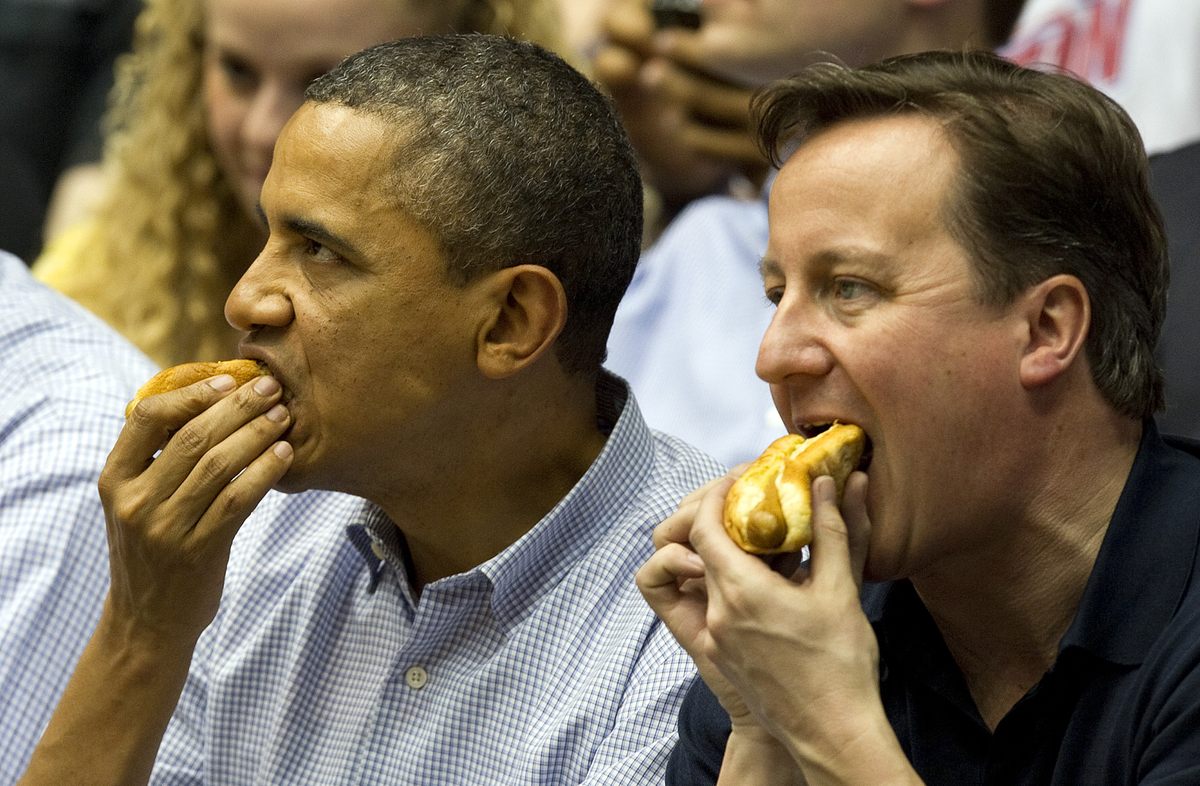 President Barack Obama and British Prime Minister David Cameron eat hot dogs at the NCAA basketball tournament in 2012. JIM WATSON/AFP VIA GETTY IMAGES
President Barack Obama and British Prime Minister David Cameron eat hot dogs at the NCAA basketball tournament in 2012. JIM WATSON/AFP VIA GETTY IMAGESThe last time hot-dog diplomacy generated headlines was in 2009, when it appeared that tensions between the United States and Iran were starting to wane. The Obama administration told American ambassadors “they may invite representatives from the government of Iran” to their 4th of July festivities. “A New Iran Overture, With Hot Dogs,” read one story in The New York Times. A few weeks later, though, after the Iranian government violently suppressed protests following the country’s presidential election, American diplomats rescinded the invitation.
It’s only a matter of time, surely, before an American president shares another hot dog lunch with another world leader. For their part, U.S. embassies still serve hot dogs, giving them pride of place in recent announcements about events in Bulgaria, Montenegro, Italy, and Israel. While no meal between leaders is likely to top the picnic at Hyde Park as a media spectacle, and the power of hot dogs to generate headlines seems to have waned, the United States hasn’t given up on their soft-power potential. Like King George VI, American diplomats keep going back for more.
